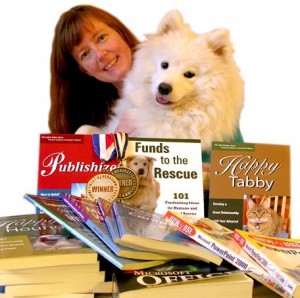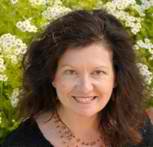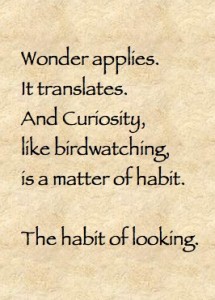There’s Big Stuff happening here at Susan T. Blake Consulting, with system crashes and their attendant learning opportunities, new programs, a Contest (scroll to the end if you can’t wait), and a new series of Guest Posts on Curiosity. Read On!!!
* * * * *
Captains Curious
You may have noticed that on the last two Thursdays I have run guest posts on the subject of Curiosity, one of my favorite topics! (Click here to read them.) I’m thrilled to tell you that these are just the beginning of a weekly series!
After approaching several people and inviting them to participate, the response has been fantastic! There are several weeks of fun and thought-provoking posts ahead, with people in a variety of roles exploring why curiosity is important, what role it plays in their lives, when (and why) curiosity is challenging, and more.
Why am I doing this? Well, I am a big fan of Wonder and Curiosity. In fact, I’d go so far as to make two pretty bold statements:
Wonder saved my life.
-and-
Curiosity can save the world.
I believe curiosity doesn’t only help us to solve problems and be more creative and play well with others. Curiosity also can be used to understand ourselves better. And that makes it a pretty extraordinary Super Power – one each of us can access.
So, in the interest of broadening the discussion and bringing you more perspectives than just mine, I have launched a series of posts by curious guests – nicknamed the Captains Curious.
Are you curious? I hope that you will check back every Thursday for the next installment from the newest of the Captains Curious. (You can have these and my other blog posts delivered to via email or RSS by signing up in the second blue box at right.)
Meanwhile, I will continue writing about wonder, curiosity, business, nature, and other things, and making connections between them that I hope will help and entertain you. Whether you agree or disagree with something that’s been written, please leave a comment!
* * * * *
Crash Course in (My Own) Process Improvement
Last week Susan T. Blake Consulting suffered a disastrous systems failure. Luckily, cool heads prevailed and all is now well. But important lessons (or at least reminders) came out of it that I want to share with you:
Our Operating System had fallen so far behind the current supported version that several vital pieces of business and communication software were no longer compatible, leaving us less and less able to connect effectively with colleagues around the world. After performing a back-up of the current system, the Operating System upgrade was initiated.
It promptly crashed the system and wiped the hard drive.
After conferring with outside consultants with expertise not possessed by our internal team, the upgrade was completed.
Meanwhile, emergency meetings were held to assess the potential damage and establish a recovery plan (corrective action). The Disaster Recovery team went into action and quickly discovered that the systems backup was incomplete, as it only included data and not applications. A long process of re-installing original applications and then downloading upgrades, as well as re-downloading applications acquired online, was undertaken.
The CEO also called meetings of the C-level executives to address root cause(s) of the debacle, assess lessons learned and implement process improvements (preventive action):
- The Chief Operating Officer assured the others that processes scheduled on external systems (blog posts and Tweets) were unaffected.
- The Chief Information Officer confirmed that application software was available for reinstallation and that the Disaster Recovery team was busy with reinstalling, upgrading and testing applications, and that key data was safe and available for restoration.
- The Chief Financial Officer reported that no hard dollars were lost due to the crash, but that soft dollars were certainly impacted due to lost productivity.
- The Chief Risk Officer admitted that a Lessons Learned review had revealed that a poor planning process had allowed for only a partial backup, an oversight that is being corrected in a new backup plan.
After a long process of reinstalling applications, downloading upgrades, restoring data, and systems testing, the Distaster Recovery team announced that all systems were Go and the team was rewarded with a round of applause and a day off.
The moral of the story is four-fold:
- Do regular system backups and always do a complete system backup before upgrading business critical systems.
- Don’t be afraid to ask for help from outside experts.
- Be curious about the root causes of problems and accept and communicate Lessons Learned without blaming or scapegoating.
- Remember to say Thank You to people and reward them for their efforts, even if they are “just doing their job.”
* * * * *
Contest Time!
Last but not least, it’s Contest Time!
Is there something that has been tickling your mind or blocking your path? Something you would like to explore and hash out with a group of colleagues or trusted friends?
Do you need an objective third party to come in and facilitate, or provide a fresh perspective?
You’re in luck!
Enter to win a FREE* custom half-day workshop or retreat ($500 value)!!!
Whether you want to address a business challenge, or a career, spiritual, relationship, or creativity issue, or you just want a mental massage, I will work with you to identify the topic and desired outcomes and I will design a custom 4-hour workshop for four to eight people on the subject of your choice.
Simply send a short email to susan@susanTblake.com with the subject line “Contest Time!” In your email, please include your name, phone number, email address, City and State, and a brief description of the workshop or retreat you want to hold and why. The winning entry will be selected by a panel of judges.
Entries are due by Tuesday, April 19, 2011. Yes, you have one week!
*Entries will be accepted from all over, but entrants from outside the greater San Francisco Bay Area must assume travel and lodging expenses if their entry is selected.
* * * * *
Meanwhile, you might be interested in visiting the blogs of Gwyn Teatro and Amy Oscar, who have written two wonderful posts that talk about Curiosity in very different contexts: Leadership and dealing with anxiety. Both are excellent!






 Twitter
Twitter LinkedIn
LinkedIn Facebook
Facebook